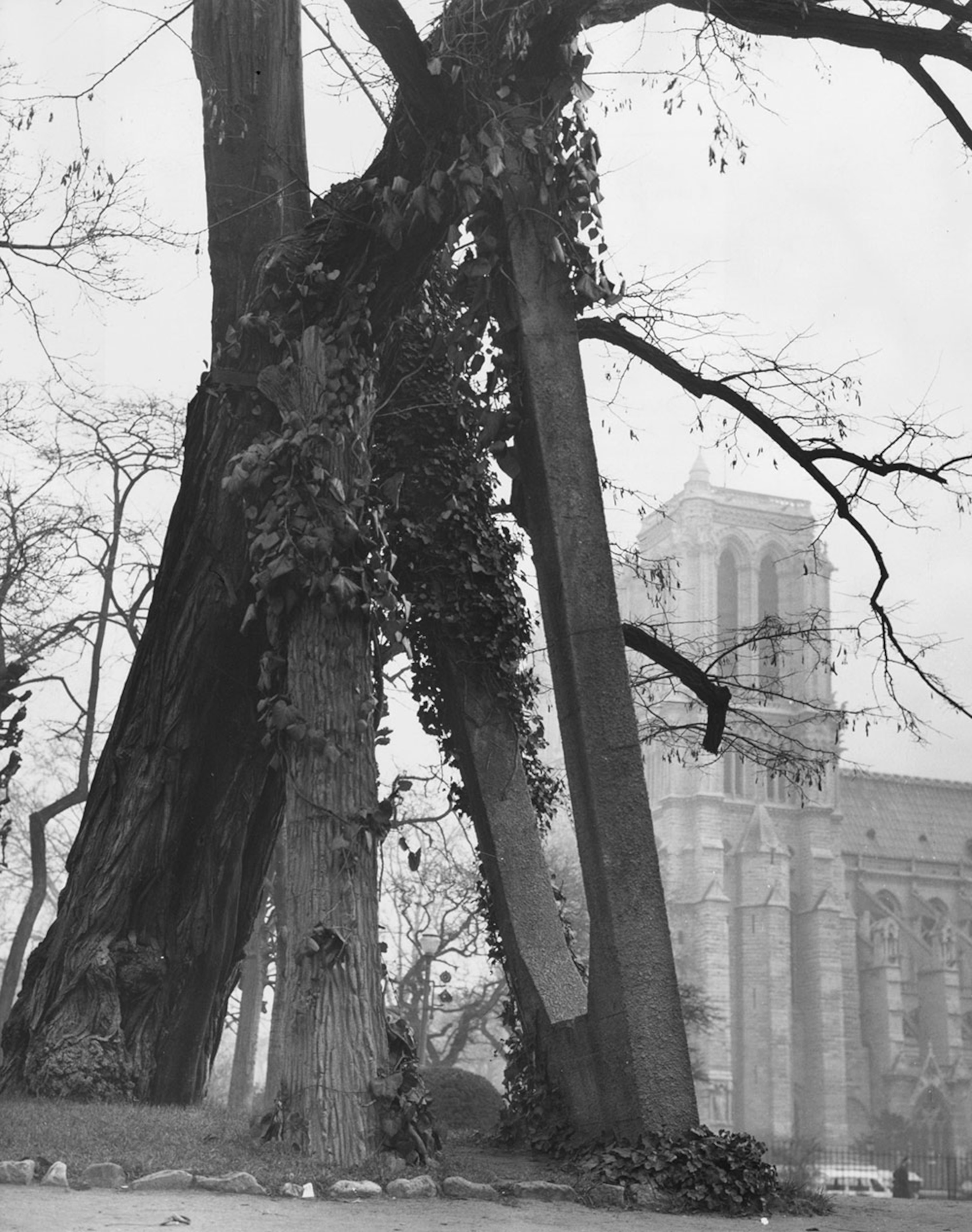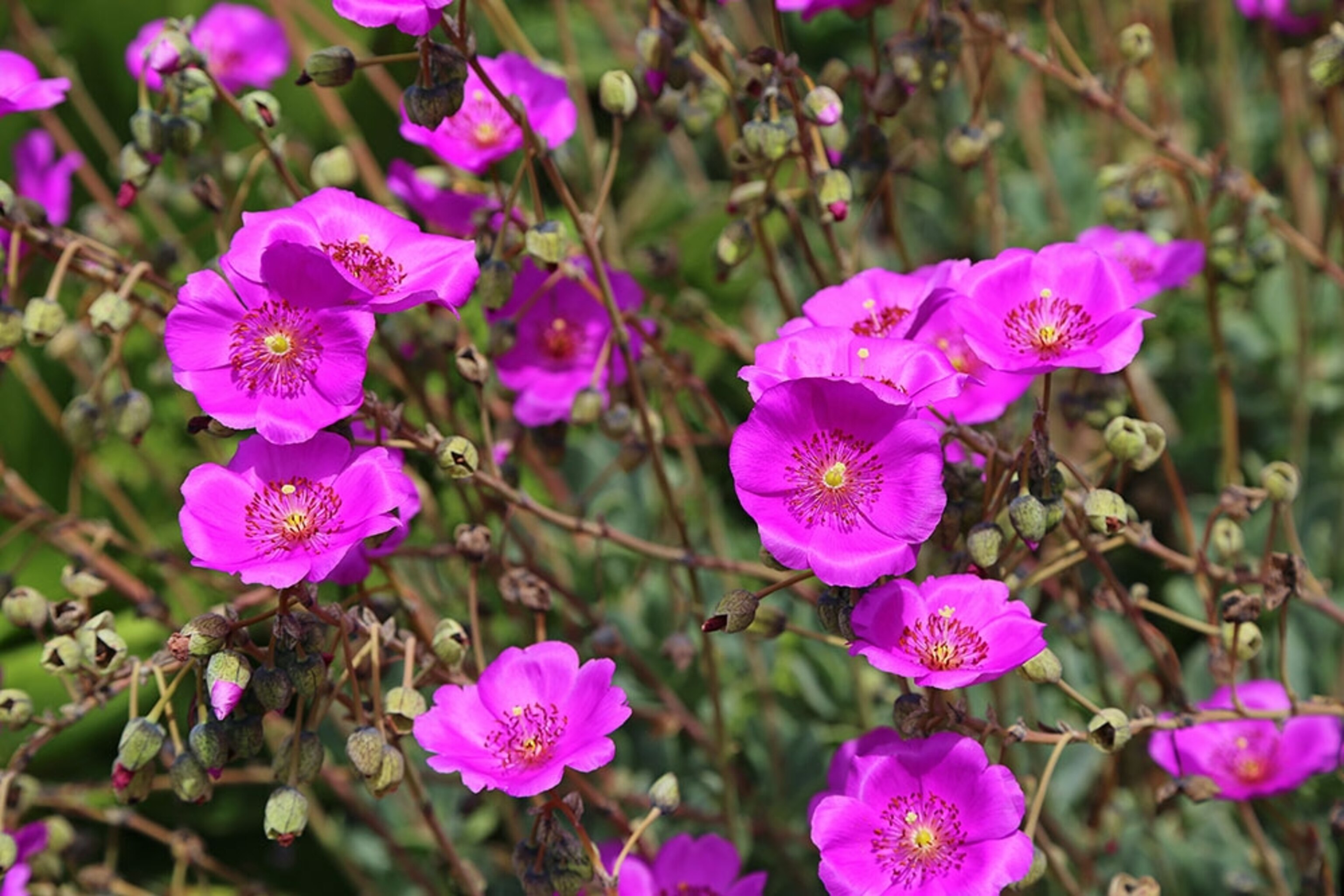This article is an adaptation of our weekly Planet Possible newsletter that was originally sent out on July 13, 2021. Want this in your inbox? Sign up here.
By Rob Kunzig, ENVIRONMENT Executive Editor
From the window of the apartment I’m staying in I can see the top of a not very tall but very remarkable tree, one that has occasionally been distracting me from the story I came to Paris for. I know the tree (pictured above) is remarkable because a plaque identifies it as the city’s oldest, planted in 1601. It’s a black locust, Robinia pseudoacacia, and it came originally from the Appalachians, in the United States.
Now, for various reasons that 1601 date is doubtful. But it appears likely that the tree was indeed planted sometime in the early 17th century by one Jean Robin, gardener to a succession of French kings. It has survived wars and revolutions and this summer has sprouted a nice full head of greenery. A wounded old soldier itself—its scarred trunk is kept upright by concrete braces—it turns out to have been the spearhead of an invading army: Since the 17th century, American black locusts have advanced across Europe and indeed the world.
In Central Europe, especially, foresters soon fell in love with them. Black locusts grew quickly on land that had been denuded for firewood, protecting it from erosion. More recently, on the Loess Plateau in northwestern China, 25 million acres have been planted with black locusts over the last few decades to combat some of the worst soil erosion on Earth. Black locust wood is valuable too, and not just for burning; it’s hard and durable. Four centuries after Robin first planted the American import in his garden, Robinia is advertised here as the only “European” wood that can be used for garden furniture without pesticide treatment—a sustainable alternative to imported tropical teak.
The trouble is, black locust doesn’t stay where it’s planted. It’s incredibly invasive, spreading by underground runners. In that it’s like another hardy pioneer, Ailanthus altissima, aka the tree of heaven, which in the 18th century traveled the world in the other direction, from China to America, with Paris botanists again offering a crucial assist. American gardeners fell in love with the pretty tree, which grows just about anywhere, even through cracks in pavement—it’s the central character in A Tree Grows in Brooklyn. But as Troy Farrah reported recently for Nat Geo, scientists are now desperately looking for a way to kill the biodiversity-wrecking “tree of hell,” pinning their hopes on a newly discovered fungus.
The world is a mess, our mess. Czech scientists, reviewing the spread of black locusts in southern Europe recently, concluded: “Our results confirm that it is difficult to answer an important question, whether Robinia should be cultivated and promoted, widely tolerated, or eradicated as a dangerous invasive alien.” The answer has to be local, case-by-case, they said.
About 500 feet north of the oldest tree lies the wreck I came here for: the cathedral of Notre Dame. It’s a portal into the 12th and 13th centuries, but also the 19th, when it was extensively rebuilt. The team now rebuilding the church again, after the catastrophic 2019 fire that sent its steeple crashing through its soaring vaults, are trying to recapture both those layers of history. The scruffy black locust that’s rarely noticed in the little park across the Seine is a reminder that in the natural world too, we can only rarely unwind the complicated history we’ve created. We can just try to manage it better.
If you want to get this email each week, join us here and invite a friend.
TAKE SIX
- Will dams spoil one of Europe’s last wild rivers? (Pictured above, a stalled dam project in Albania)
- How flooded coal mines could heat homes
- The greenest way to grill
- Under threat: The humble waterway that helped create Phoenix
- Entrepreneur seeks to bring energy efficiency to communities of color
- Indigenous people are the world’s biggest conservationists, but they rarely get credit for it
ONE MOMENT
Slumps and slides: More than 600,000 people ride buses every year to see the animals in Alaska’s Denali National Park and Reserve. Recently, the access road has required an increasing amount of maintenance, and scientists believe climate change is to blame. Much of the shallow permafrost is melting and the park is projected to lose most of it by 2090s, Nat Geo reports. (Above, Dall's sheep above the Toklat River in Denali National Park.)
IN A FEW WORDS
It was 104 degrees, and this patch of ground hadn’t been watered since May, yet sunflowers twisted above the weeds and bloomed. ‘Those poor sunflowers,’ California farmer Liset Garcia said. ‘I want to be resilient like them.’
Diana Marcum, Journalist, Los Angeles Times, From: Drought has taken the water from this farmer’s wells, but for her, life still gives
PLANET SMART
We asked, you answered: Readers wrote in saying they were doing their bit to try to cool down neighborhoods after our report on wide temperature differences between tree-lined areas of Los Angeles and sunbaked concrete-dominated sections. Reader Glenn Ainsworth already has planted nine redwoods around his Lompoc, California home; now he’s cooling the community’s alleyways by spreading cuttings of calandrinia (pictured above at the Mendocino Coast Botanical Gardens in California). “It can live in full sun or shade, requires little to no water, and produces a remarkable profusion of magenta flowers that almost glow,” he writes.
See: How these 1930s maps left some neighborhoods with fewer trees
Dig deeper: Los Angeles confronts its shady divide
FAST FORWARD
Explore the trees: It’s important for kids to know the importance of the trees and the animals who live there. Help kids like nine-year-old Isla Medrano of Maryland, above, create a birdsong maker to explore this microhabitat, Ella Schwartz writes in our latest Planet Possible family challenge.
Challenges 1-5: Miss the previous family challenges? Join in the fun here.
This was edited and curated by Monica Williams and David Beard, and photographs were selected by Heather Kim. Have any suggestions for helping the planet or links to such stories? Let us know at david.beard@natgeo.com.





